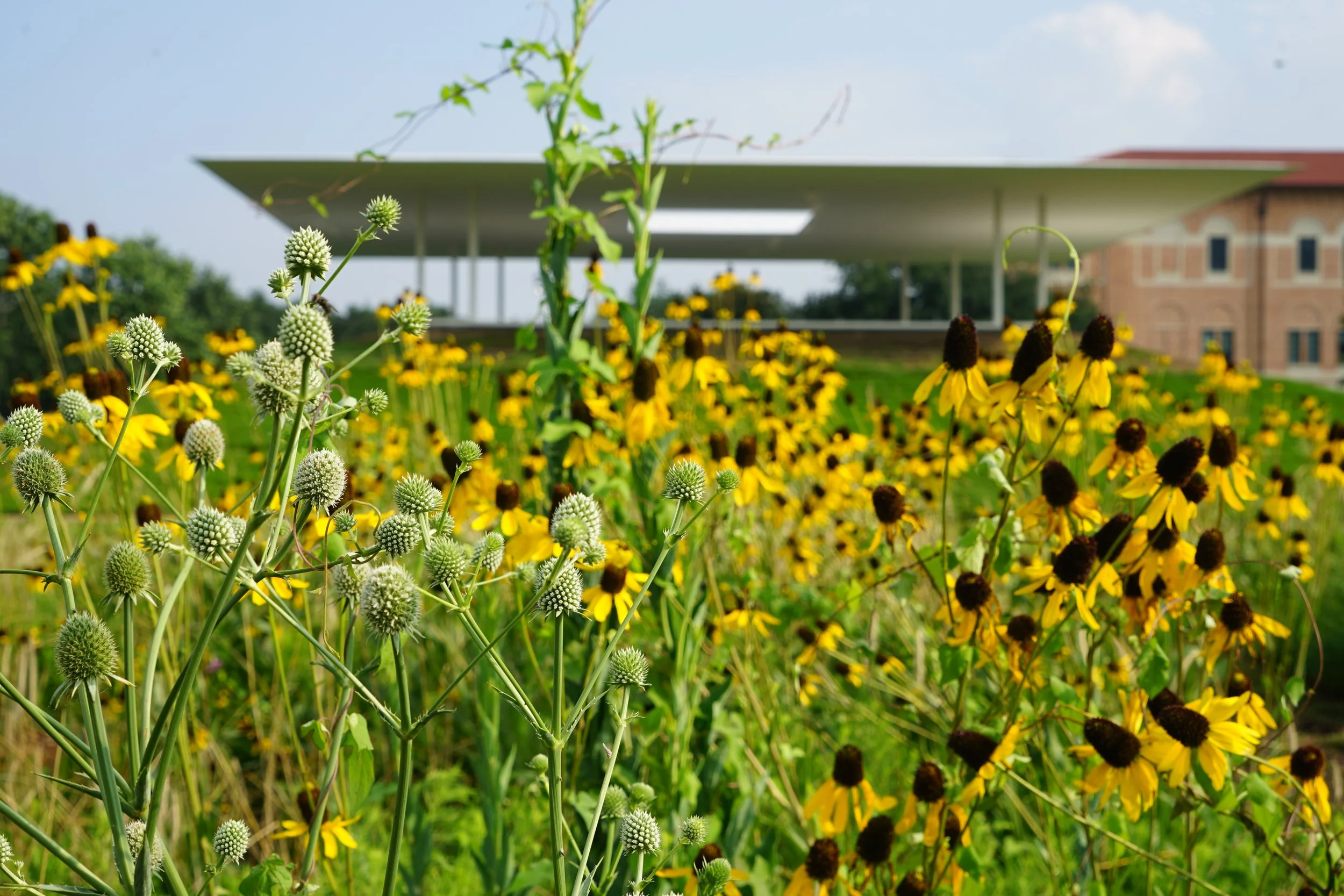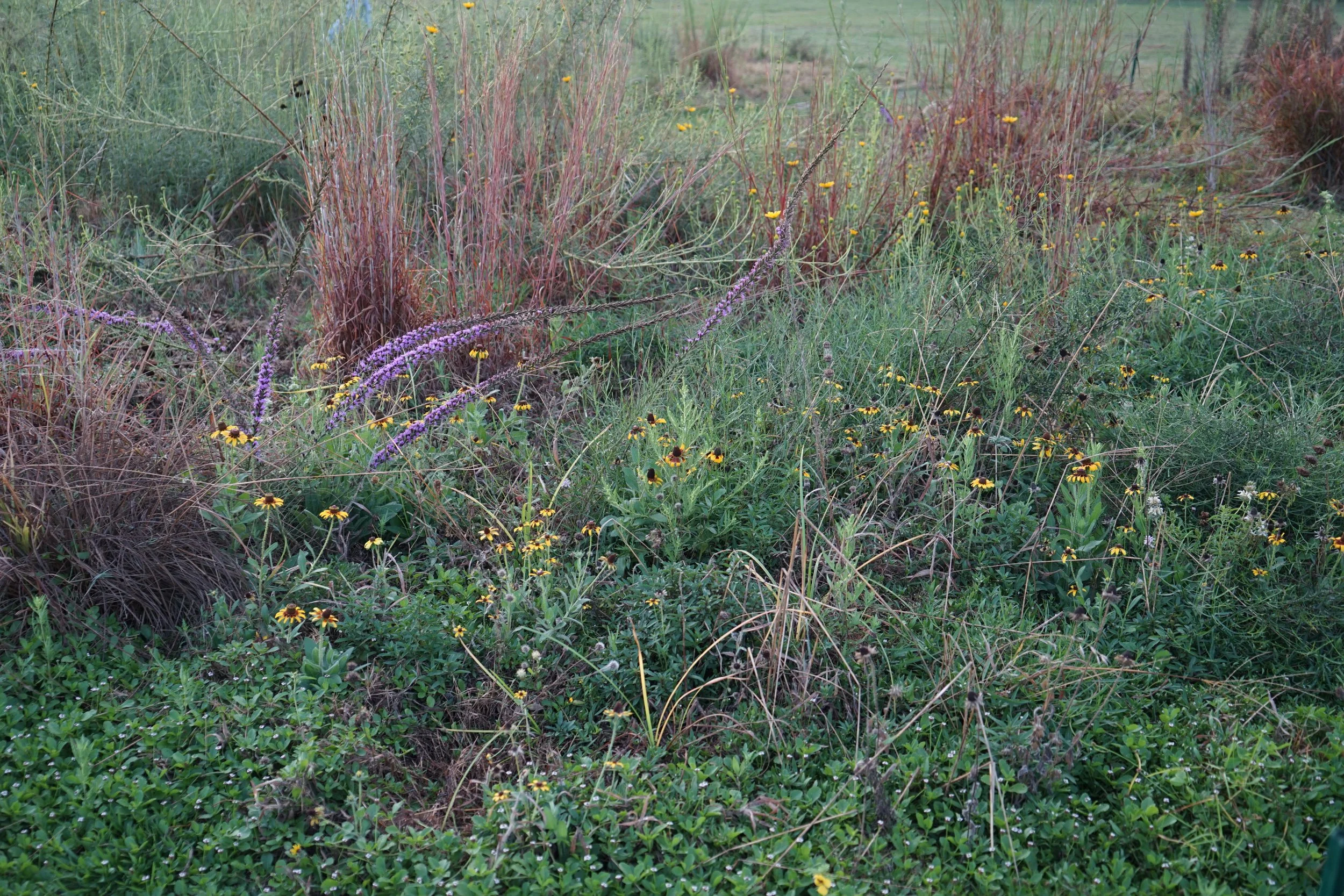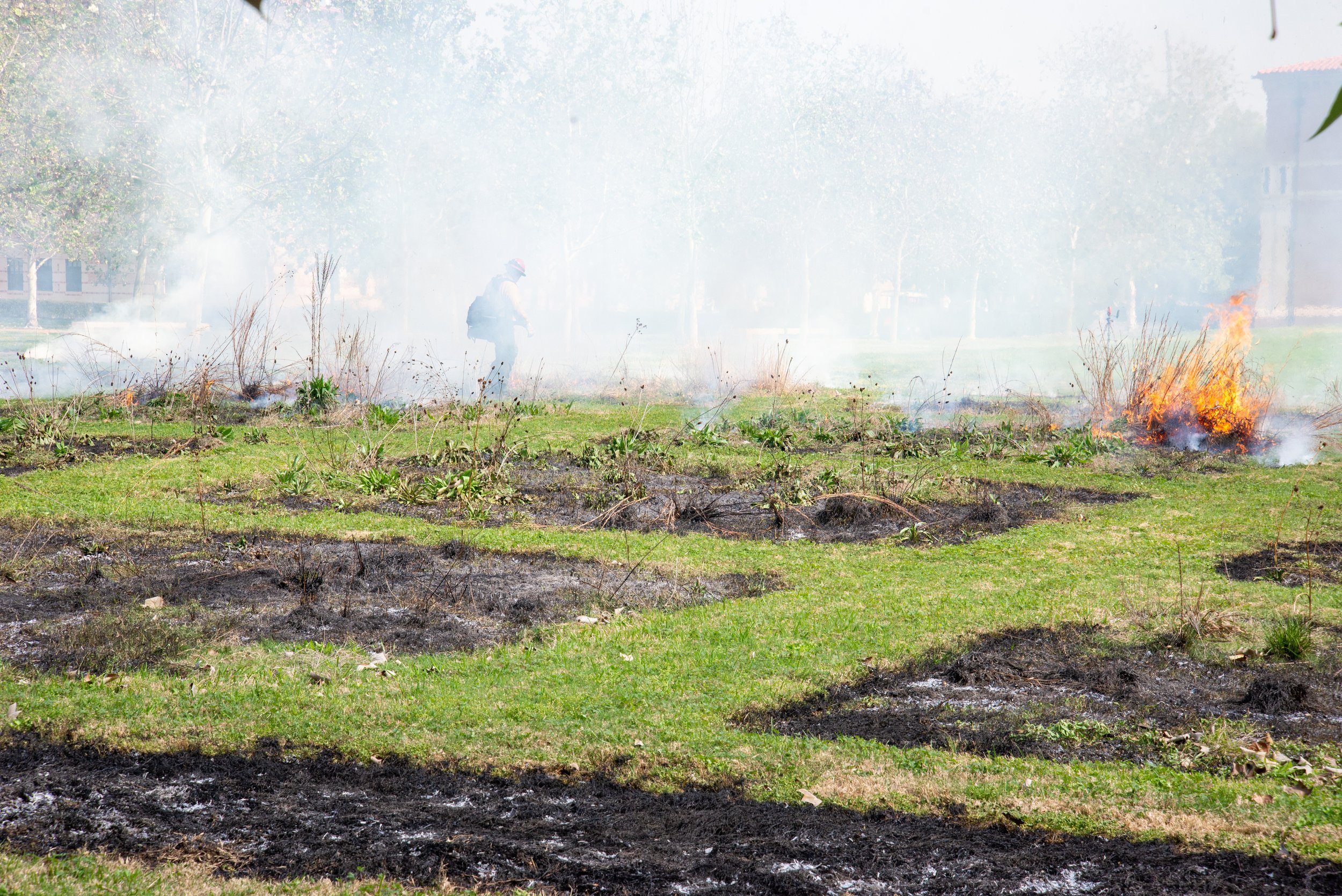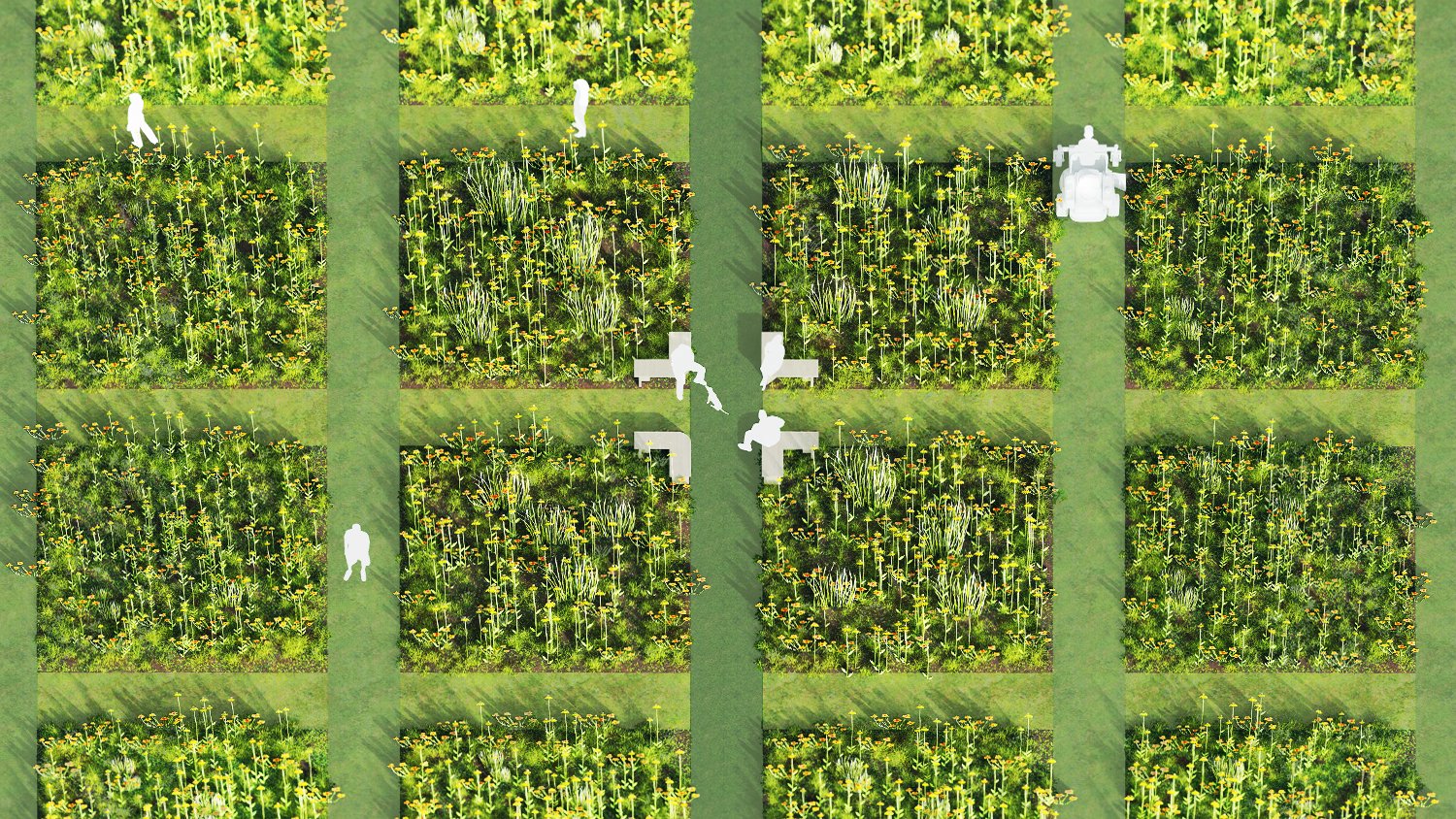AN EXPERIMENTAL PRAIRIE GARDEN FOR THE HOUSTON COMMUNITY.






ABOUT
Prairie Plots is a living installation on the Rice University campus that envisions an alternative to the ubiquitous mowed lawn. From urban parks to suburban front yards, the mowed lawn is a fixture of American culture. Maintaining the appearance of cropped, homogenous, green grass, however, can be detrimental to people and the environment: irrigation systems are water-intensive, pesticides are toxic, and gas-powered lawnmowers emit noxious fumes. Lawns occupy vast areas of the city, and gasoline-powered lawn and garden equipment are responsible for 24% to 45% of all non-road related gasoline emissions.
Prairie Plots is a collaboration between Rice Architecture and Rice Facilities, Engineering, and Planning to replace 10,000 square feet of existing campus lawn with endemic prairie plant species. In contrast to a typical lawn, prairie plants require less overall maintenance, including less water and less mowing. In addition to providing habitat for insects and birds, prairies can store significant volumes of water in the soil with their deep root systems, which reduces the impact of stormwater flooding during Houston’s frequent rain events.
In the plots, visitors will find key species of the Texas Gulf Coast prairie, including Texas Coneflower (Rudbeckia texana), Blazing Star (Liatris spicata and Liatris acidota), Little Bluestem (Schizachyrium scoparium), Seaside Goldenrod (Solidago sempervirens), and Rattlesnake Master (Eryngium yuccifolium). Many of the plants were collected by seed or transplanted from nearby prairies and are highly adapted to the region’s hot/humid climate.
Installed in Spring 2022, Prairie Plots is an evolving research initiative that has engaged many areas of Rice University and the community beyond. For example, various courses have conducted research on the plots; Rice Facilities, Engineering, and Planning conducted a prescribed burn to manage the plots, and finally numerous volunteers have assisted in the upkeep, transformation, and care of the landscape.
Over time, Prairie Plots is designed to grow and evolve in response to the changing seasons and the environment. In the summer, the plots are alive with the colorful blooms. In fall, plants begin to set seed and you can observe the fluffy seed heads of tall prairie grasses. In the winter, dormant grasses provide habitat and cover for the soil; and in the spring, ephemeral annuals bring color back to the plots.
DESIGN IMAGES
PROJECT SUPPORTERS
The project was supported by Rice Architecture, Rice Facilities, Engineering, and Planning; Rice University Office for Research, and the Arboretum Committee.
Many thanks to Coastal Prairie Conservancy, Nature’s Way Resources, MicroLife, and Next Door Nursery.
Prairie Plots would not exist without the care and tireless help of many community and student volunteers.



